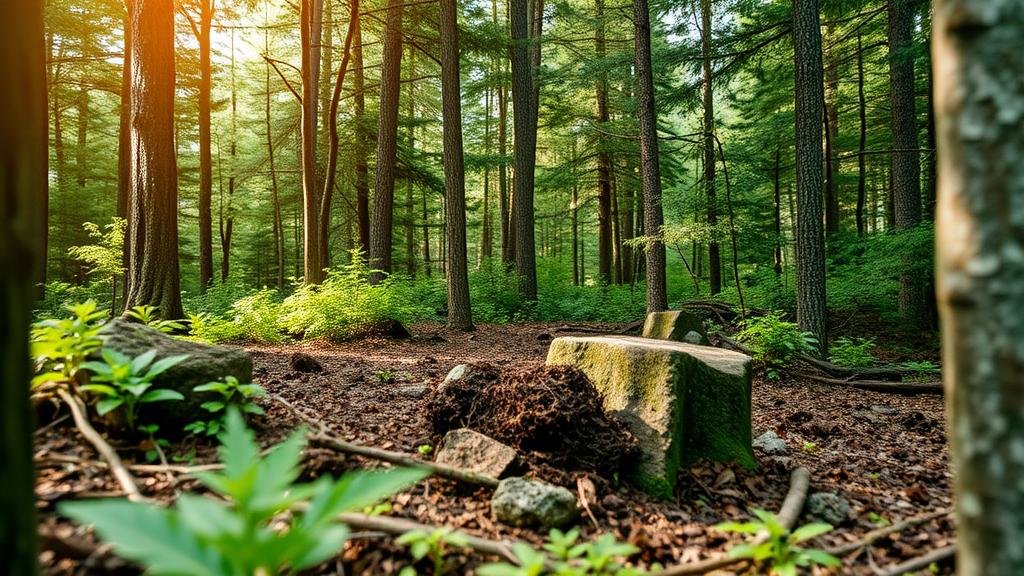Recovering Gold and Silver Stashes in Overlooked Forest Clearings
Recovering Gold and Silver Stashes in Overlooked Forest Clearings
The allure of uncovering hidden treasure has captivated humans for centuries, particularly in the context of precious metals like gold and silver. Such pursuits, however, require a nuanced understanding of not only the metals historical significance but also the practical strategies for locating these valuable resources within forest clearings that have been overlooked. This article aims to provide an extensive guide on the methods, tools, and considerations involved in recovering these treasures in such environments.
Understanding Historical Context
The search for hidden treasure is often rooted in historical precedent. Throughout numerous epochs, particularly during periods of economic turmoil or war, individuals have sought to conceal their wealth in remote areas, including forest clearings. For example, during the California Gold Rush of the mid-19th century, many prospectors buried their findings in hopes of retrieval at a safer date. Historical documents or maps referring to these concealed stashes can serve as critical guides for modern treasure hunters.
Identifying Ideal Locations
Successful treasure recovery starts with selecting the right locations. Forest clearings that are overlooked often share certain characteristics:
- Vegetation Patterns: Clearings surrounded by dense foliage can indicate human activity, as individuals may have used these areas for camp or storage.
- Nearby Water Sources: Proximity to streams or rivers historically correlates to human settlement, making it a prime area for treasure deposits.
- Elevation Changes: Higher ground can be a strategic location for concealment, as it affords a view of approaching threats.
According to the National Forest Service, approximately 190 million acres of national forests exist in the U.S., providing ample opportunity for research and exploration. But, knowledge of historical patterns is critical in honing in on fruitful clearings.
Utilizing Technology and Tools
Modern treasure hunting relies on a host of tools for effective metal detection and excavation. Some of the most commonly employed devices include:
- Metal Detectors: Devices equipped with advanced technology–like pulse induction and VLF (Very Low Frequency)–can significantly enhance the chances of locating buried metals.
- Ground Penetrating Radar (GPR): This technology allows treasure hunters to visualize subsurface features, leading to better-informed digging strategies.
- Drones: Equipped with thermal or multispectral sensors, drones can provide aerial insights into otherwise inaccessible forest areas.
A case study conducted by the University of Virginia reported that metal detectors could increase detection rates by as much as 70% when used in conjunction with GPR in land previously believed to be sterile.
Legal and Ethical Considerations
Before embarking on a treasure recovery expedition, it is essential to consider legal ramifications. Many areas require permits for metal detecting or excavation, particularly in protected forest areas. Plus, it is crucial to ensure that any potential finds are either reported or turned over to the appropriate authorities, as per national laws regarding archaeological artifacts. Responsible treasure hunting ensures that historical contexts are preserved and that future generations may also benefit from such explorations.
Techniques for Recovery
The actual recovery process combines methodical excavation with technology. Here are some accepted techniques:
- Surface Scanning: Start by scanning the surface for any visible indications of buried items, such as soil discoloration or unusual rock formations.
- Layered Digging: Its important to excavate in layers. This not only helps preserve the context of where objects are found but can also prevent damage to fragile artifacts.
- Documentation: Always document your findings meticulously. This includes noting the location, depth, and condition of artifacts, which can be invaluable for future research.
Case Studies of Successful Recoveries
Numerous treasure recoveries have occurred in forested areas, reinforcing the potential hidden within these landscapes. For example, in 2012, a group of amateur treasure hunters in a remote Oregon forest located over $300,000 worth of gold and silver coins, buried during the Great Depression. Their successful search was bolstered by consulting local historical societies and using advanced metal detection equipment.
Another notable instance occurred in 2017 when conservationists unearthed a stash of Spanish gold in a clearing in a Florida state forest, estimated to be valued in the millions. This event emphasizes the importance of careful research and cooperation with local authorities to ensure that recovered treasures are preserved for historical study.
Conclusion
The potential for recovering gold and silver stashes in overlooked forest clearings cannot be overstated. By combining historical knowledge, advanced technology, and ethical practices, treasure hunters stand to uncover significant finds that may enhance our understanding of the past. Through careful planning and execution, not only can individual treasures be recovered, but also histories can be rewritten, preserved, and shared with future generations.
Actionable Takeaways
As a takeaway, those interested in treasure hunting should:
- Conduct thorough historical research to identify potential sites.
- Invest in quality metal detection equipment and familiarize themselves with its use.
- Follow all legal regulations and ethical guidelines in their pursuit.
- Document all findings to contribute to historical records.
In summary, treasure hunting in forest clearings requires a blend of creativity, caution, and respect for history, with significant rewards awaiting those willing to venture into the unknown.



